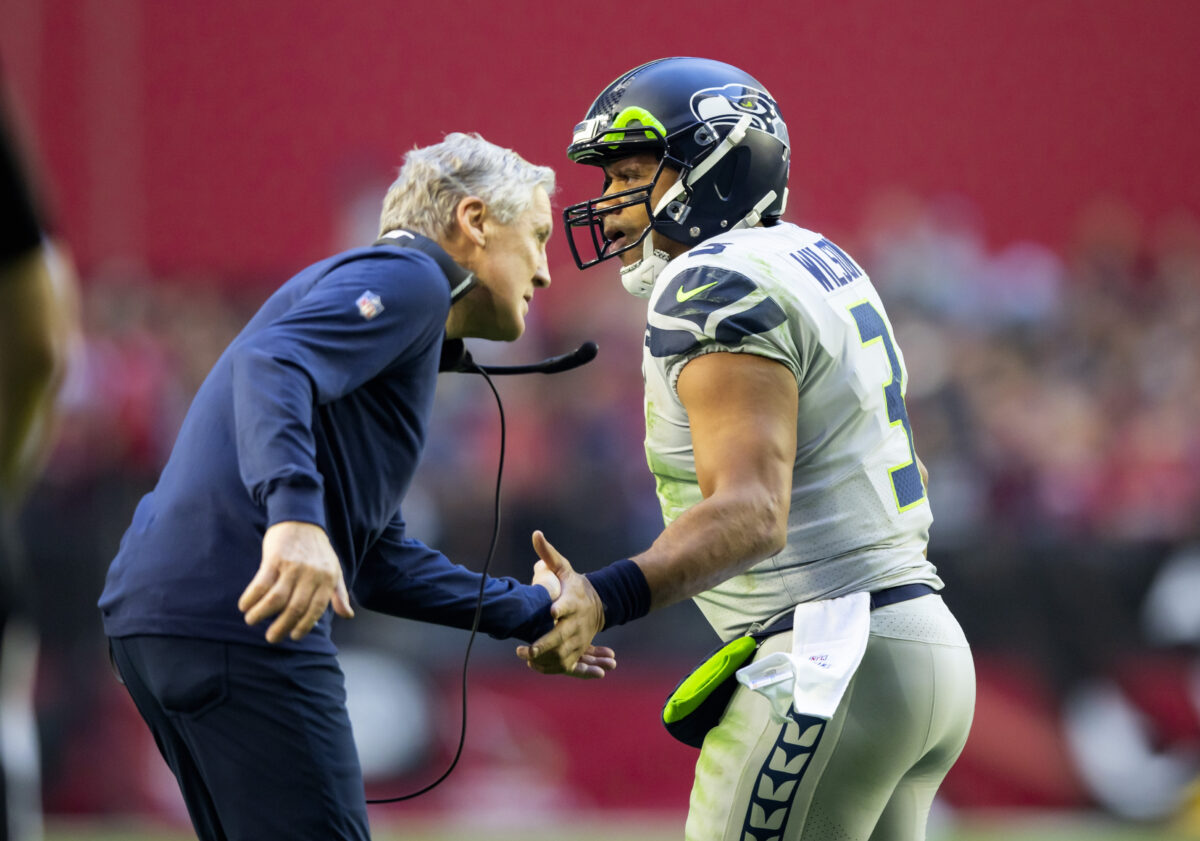If you are running numbers for Washington Football Team head coach Ron Rivera, and your success rate isn’t 100%, don’t bother.
There are coaches and general managers in the NFL who swear by analytics, and there are coaches and general managers in the NFL who are more inclined to swear at anyone daring to bring advanced metrics into the discussion. Every NFL team has at least one person on staff whose responsibility is (to a greater or lesser degree) mining data and interpreting it for the hypothetical benefit of the organization. It could be great information; it could be junk science. The value is in the unraveling, the usage, and the ability (not to mention the willingness) to understand.
Recently on the Rich Eisen Show, Washington Football Team head coach Ron Rivera had a few things to say about analytics and probability as they apply to in-game situations.
“I’ve had situations where we’ve gone for it with the analytics, and it didn’t happen out, and I was told, ‘Hey — it’s okay. You did what the analytics said.’ And to me… I struggle with that, because if I did what analytics said, and it said, ‘Nine times out of 10, you’re going to complete it, there’s that one time out of 10 you don’t.’ You know what I’m saying? So, how do you you’re going to be that one time out of 10 where you don’t? Where it isn’t successful? There is no guarantee. You can tell me all you want that… hey, it’s 99%. That’s good, but what if you’re that 1%? What about that one time it doesn’t work? Nobody talks about that until it happens.”
Well, there’s a lot to unpack here. I’ve asked a lot of coaches and general managers about their approaches to, and thoughts about, analytics. One sure giveaway that they’re not really involved in the benefits advanced metrics may bring is referring to analytics as “the analytics.” It’s like referring to Led Zeppelin as “The Led Zeppelin.” I’m going to assume you’ve never shelled out cash to enjoy “When the Levee Breaks.”
Regarding the use of “the analytics,” if Rivera’s people with the stats had a probability model that allowed for, say, successful conversion of third or fourth downs at a 90% or 99% rate, those people should be working on things far more important than football. Last season, the Bills’ offense led the NFL in third-down conversion rate with 49.7%. Washington converted its third downs 39.1% of the time, one of the lowest rates in the league, so maybe that’s where Rivera isn’t happy. If you were converting 90% of your third downs, you’d never lose a game. In fact, most of your games would be blowouts to the point where the league would investigate.
The Bills and Dolphins tied for the highest fourth-down conversion rate at 80%, while Washington converted 11 of 19 fourth downs for a 57.9% conversion rate. If Rivera’s going on instinct here as opposed to probability, and he throws probability out the window, shouldn’t he have a more imposing success rate?
In 2018, Drew Brees set the NFL’s single-season record for completion percentage with a 74.4% completion rate. Had Brees been Rivera’s quarterback at the time, would Rivera have benched him at any point in the season when Brees’ passing attempts weren’t working out 25.6% of the time? Of course not, because Rivera would understand that in the history of football, to have a completion percentage of 74.4 would mean that you’re decidedly ahead of the average. He has a reasonable base of percentages from which to decide what success means.
As far as the people who are hired to crunch these numbers and feed them to the coaches who may or may not choose to use them, there is no one global number designed to suck the brains of coaches right out of their heads. The metrics, which account for everything from situation to opponent to recent success and scads of other things, are designed to help a coach in his decision-making process. They are not there to replace the coach’s instincts, or his in-game feelings about a particular situation.
Rivera may hear in his headset that he has a 90% chance of success in a particular endeavor. And he may respond, “Look, my starting quarterback is out, my two offensive tackles are hurt, we’re facing a defense that allows just 2.1 yards per carry up the middle, and my receivers have dropped five passes in the last five drives. I am punting, you nerds.”
And in that case, Rivera might be absolutely correct to do so. Probability varies based on all kinds of factors. But if you’re not willing to listen, there is no probability, there are no factors, and you may well be denying your team a better success rate in a particular fashion because you’ve decided the odds aren’t worth it, without knowing what the odds really are.






